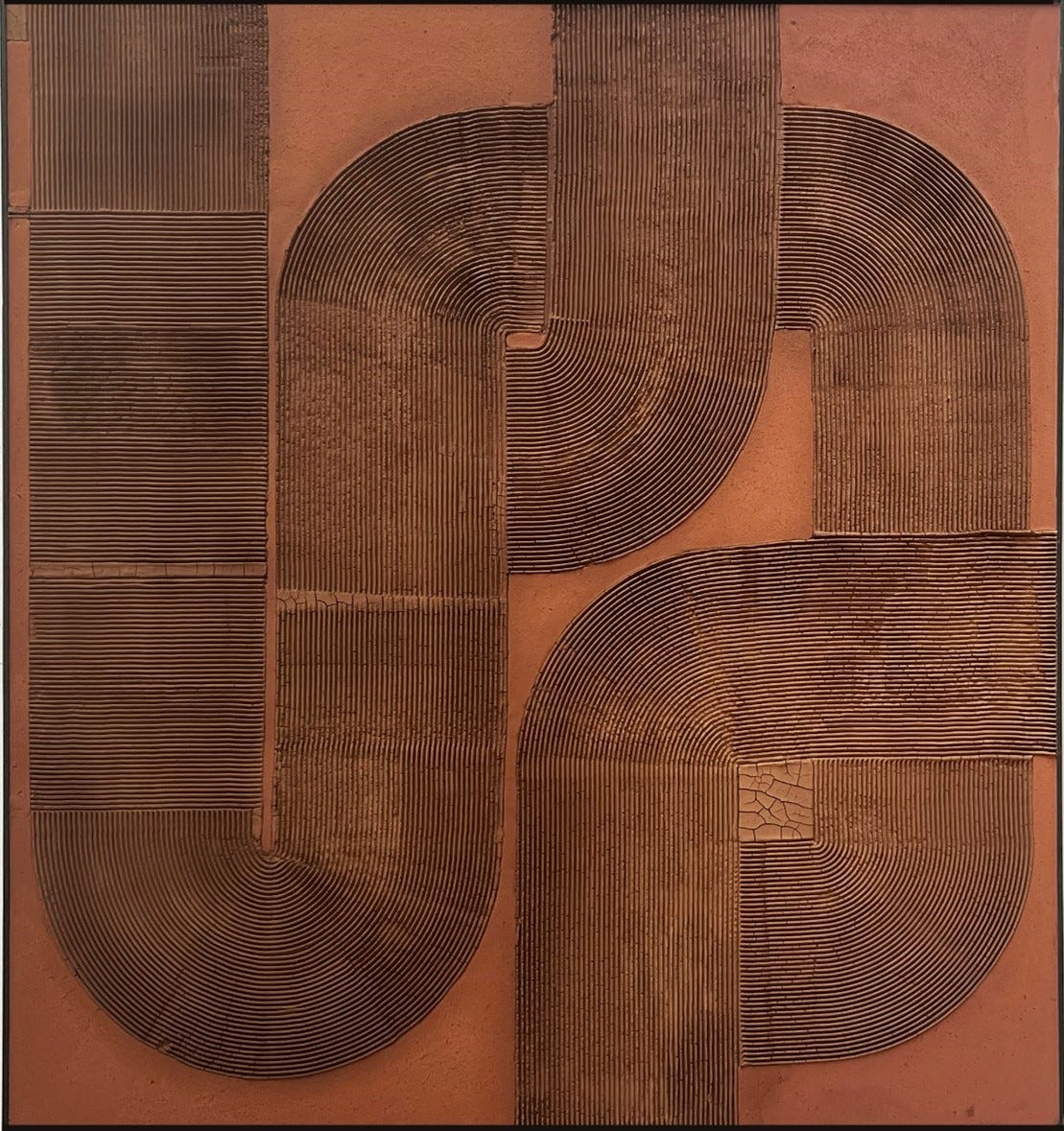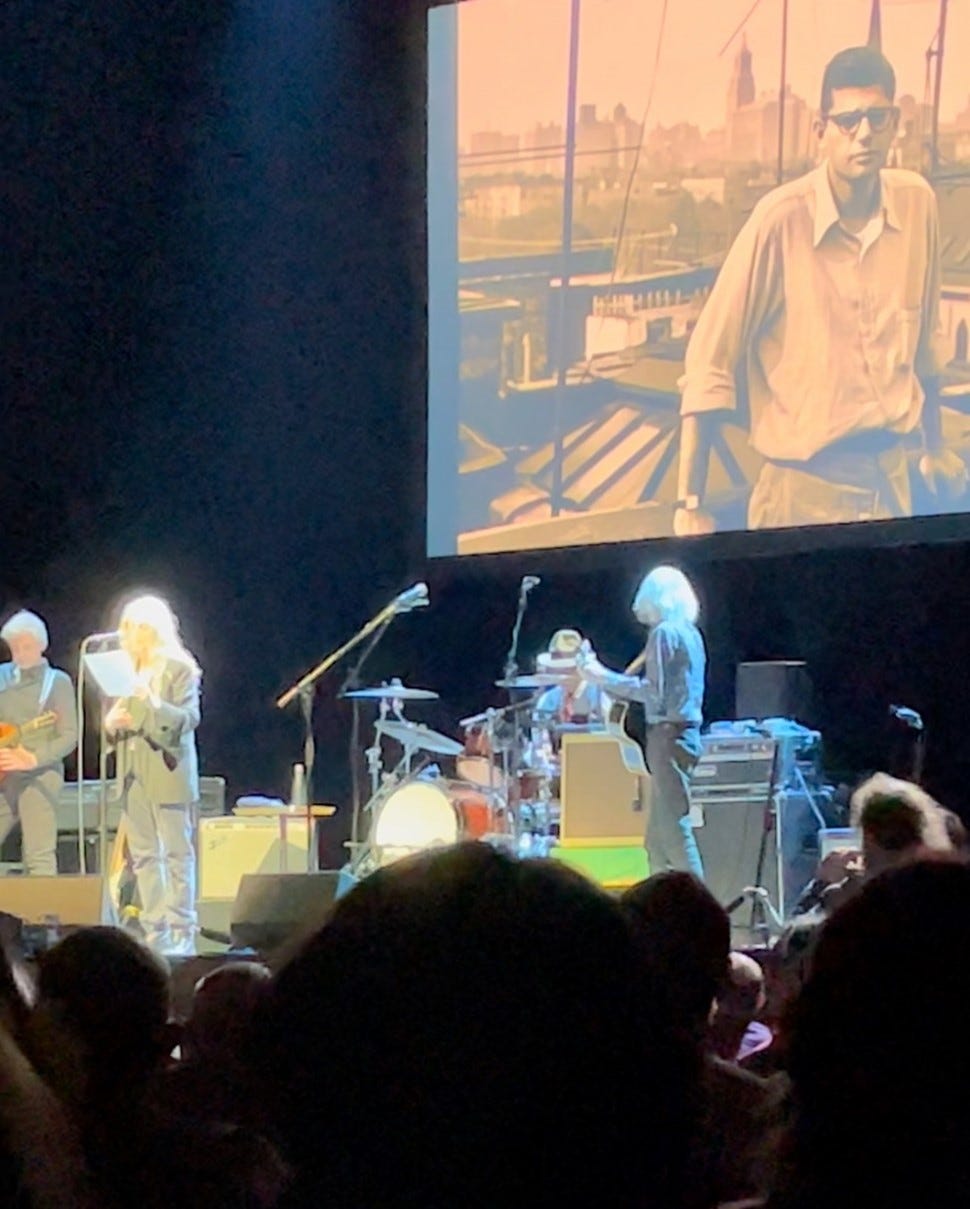Scrapbook's Aesthetes & Artists series presents curator Imtiaz Hafiz
Senior Curator with the US Department of State’s, Office of Art in Embassies, Imtiaz Hafiz talks about diverse perspectives, fostering dialogues across cultures, and transcending language and politics
One day, I will have convinced Imtiaz to write a book about his work as a curator who works across cultures, with a unique insight into perspectives from not only artists that are cultural chameleons, but also those who are often labeled as ‘outsider’, in praxis with concurrently labeled ‘outsider’ systems of support, display, and practice.
As he writes below, ‘Being part of an international program offers me a global perspective on art, culture, and society. The exposure to a wide variety of artistic expressions and cultural narratives from across the world fuels my curiosity and broadens my understanding of how art operates within different social contexts.’ I look forward to reading those as yet to be written studies/books.
For now, I’m delighted that he is our third interviewee of the Aesthetes & Artists series and grateful for the thoughtfulness with which he’s tackled these questions amid a travel-packed schedule.
Hope you enjoy the interview!
—Renuka Sawhney
Scrapbook is a reader-supported publication. To receive new posts and support my work, consider becoming a free or paid subscriber. For those who already have, I’m deeply grateful.
What do you create, and what drives you to pursue this creative work?
I curate site-specific collections, choosing works that emphasize the rich cultural intersections between the U.S. and the host nation. These collections often include paintings, sculptures, installations, and other mediums that reflect the shared history and evolving relationship between nations. As a curator for the Art in Embassies program, my role involves selecting and organizing artwork that reflects the diverse cultural heritage of both the United States and the host country for exhibitions and permanent collections. The aim is to foster cross-cultural dialogue through visual art, enhancing mutual understanding and strengthening diplomatic relationships.
What I really enjoy and strive for is the opportunity to support and give visibility to talented artists from both countries is unique and rewarding. A key motivation in my work is showcasing diverse perspectives, particularly from underrepresented voices. Art serves as a powerful tool for fostering dialogue across cultures. It transcends language and politics, allowing people to connect through shared emotions, ideas, and heritage.
The most rewarding exhibitions are often in what the Department of State refers to as "hardship posts," where audiences may not have regular access to contemporary American art. Knowing that these curated collections help build bridges between nations is deeply fulfilling. The combination of cultural representation, artistic expression, and diplomacy makes this work both meaningful and essential, contributing to the broader goal of fostering mutual respect and understanding across borders.
What sustains and motivates you in your creative practice?
Working closely with contemporary artists from different cultural backgrounds and seeing their creative visions come to life in international settings is incredibly inspiring. Watching their excitement grow as we review the space with renderings and elevations, imagining the possibilities for new commissions. Curation is an ongoing creative problem-solving process. The challenge of selecting the right pieces that not only complement each other but also resonate with meaningful connections within culture, and the audience. Being part of an international program offers me a global perspective on art, culture, and society. The exposure to a wide variety of artistic expressions and cultural narratives from across the world fuels my curiosity and broadens my understanding of how art operates within different social contexts.
Which forms of art speak to you most profoundly, and why?
For me, the art that really speaks to me is the kind that sparks an emotional connection or challenges how we see the world. I’m drawn to pieces that explore identity, memory, or transformation, especially when they do it through minimalism, symbolism, or abstraction. There’s something about stripping everything down to the essentials that hits a deeper level—it’s like a direct expression of what it means to be human.
Abstract art, for example, really resonates with me because it’s so open to interpretation. It doesn’t try to be anything specific, but it stirs emotions. Artists like Agnes Martin or Mark Rothko—what they do creates a mood that makes you stop and reflect, even without a clear subject. One of the first paintings that evoked and emotion and created an understanding in me of how the language of abstraction can speak a new language is Henri Matisse's View of Notre-Dame.
Installation art is another form I love because it’s immersive. Artists like Olafur Eliasson or James Turrell completely transform a space and make you see things differently. Their work with light and space has this almost magical quality that shifts your perception.
Which recent artwork has resonated with you deeply, and what about it stayed with you?
Well, I’ve been working on a curatorial project with Moroccan artists, and one of the artists, Fatiha Zemmouri, transforms natural materials and textures into contemplative, abstract pieces that explore themes of transformation, resilience, and the passage of time. Her work taps into a raw, elemental beauty, often using organic materials like stone, sand, and earth to create tactile, minimalist pieces that evoke a powerful sense of place and memory. There’s something incredibly honest and direct in her approach that speaks to the very essence of creation. The tactile surfaces she creates invite quiet reflection, reminding me of the physical and metaphorical layers of human existence. Her pieces make me think about the deep relationship between art and nature and how both shape our environment and perception.
Zemmouri explores themes like construction, deconstruction, regeneration, and transformation. One of her works, Plowing, visually connects the artist with the people and communities of the Haouz region, which in 2023 was the epicenter of a devastating earthquake. Her focus on natural materials, combined with her exploration of time, resilience, and transformation, creates a poetic dialogue between the earth and the human experience.
What sources do you regularly turn to for inspiration, whether daily or weekly?
These days, I rely heavily on online resources for my research. I often start by exploring gallery websites and using specific keywords to investigate exhibition themes or particular artworks. Once I find an artist that piques my interest, I dive deeper into their body of work, and if there’s an opportunity for collaboration, I make it a point to connect with them directly, nothing beats a conversation in the studio.
What recent play or performance has moved you, and how did it affect you?
This past year, I had the chance to see musician and poet Patti Smith live, and she radiates raw, unfiltered emotion and authenticity in a way that goes beyond a typical concert experience. Her presence on stage is magnetic—her performances feel spiritual and poetic, more than just music. Patti connects with her audience in a vulnerable and sincere way. Watching her, you don’t just hear her songs; you step into the creative universe of her life: the iconic Horses album cover, photographed by her lover Robert Mapplethorpe; a reading of Allen Ginsberg’s Footnote to Howl; and a black-and-white video by Robert Frank for her song Summer Cannibals. She brought deeper meaning to her song People Have the Power, using it to remind us of the struggle for D.C. statehood. She showed her humanity by speaking up for people in need around the world—those affected by the earthquake in Morocco, the floods in Libya, women fighting for human rights in Iran, and striking workers in the U.S. and dedicating her song Peaceable Kingdom to the Palestinian people. She reminds you to stay involved, use your voice and a reminder that we are all interconnected.
What questions are you exploring this year, whether they relate to art, the environment, or another area of interest?
I’ve been reflecting on communication, particularly the way language shapes culture and how symbols function as a language in art. Through my curatorial projects across various countries, I’ve seen how languages not only connect people but also speak to identity and cultural heritage. In Mexico, for instance, beyond Spanish, indigenous languages are spoken by many craft artists, deeply influencing their work. Similarly, in Brazil, Portugal, and Mozambique, where Portuguese is the common tongue, artists explore the blending of European, African, and indigenous influences, creating hybrid artworks that reflect global, cross-cultural interactions. Recently, I’ve been drawn to the work of Moroccan artist Samy Snoussi, whose canvases reflect his personal journey with severe dyslexia. As a child, he began making his own marks to mimic written language, and as an artist, he has developed a system of written symbols that are independent of spoken language. What once made him feel disconnected now serves as a powerful tool for expressing his perspective on communication and connection. These symbols offer open-ended interpretation, allowing for a non-verbal expression of complex ideas, emotions, and experiences. They evoke deep emotional responses, creating a universal means of communication that transcends culture, time, and place.
Can you share more about the work of art that fundamentally changed your perspective or approach?
My early aha moment came when I saw Henri Matisse's View of Notre-Dame (1914) at a young age. Even without knowing the title, I instantly recognized what the painting depicted. The emotional impact it had on me opened my eyes to how abstract shapes and colors can convey a deep emotional connection to a place. This experience helped me appreciate the influence Matisse had on later movements, particularly Abstract Expressionism and Color Field Abstraction.
Imtiaz Hafiz is a Senior Curator with the US Department of State’s, Office of Art in Embassies. He has curated over 200 temporary and permanent exhibitions since his start in 2001, including recent permanent collections in Guadalajara, Dhahran, and Hyderabad. Before joining the Department of State, Imtiaz was Assistant Director of Montpelier Cultural Arts Center in Maryland and worked in the curatorial office of the Freer and Sackler Galleries, Smithsonian Institution. He did graduate studies in Art History at American University and received his Bachelor of Arts from The University of Maryland also in Art History. His areas of specialization are Contemporary Asian and Middle Eastern Art, and Modern and Contemporary American art.







